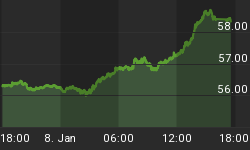After the release of the weak November employment data, the market more than ever expects the FOMC to reduce its federal funds rate target from the current 1.00%. But if the Fed really wants to stimulate bank credit extension to the private sector, it will leave its funds rate target level at 1.00% but keep flooding the market reserves so that the effective funds rate continues to trade below the target rate. As the chart below shows, since early in October, the effective federal funds rate has consistently traded below the FOMC target rate.
Chart 1
Why would a drop in the FOMC's target rate be a negative for bank lending? The banking system needs to earn higher profits to help recapitalize itself. The Fed now pays interest to depository institutions on both their required and excess reserves. The rate of interest paid on excess reserves is the lowest FOMC target rate during a reserve maintenance period. Non-depository institutions, such as the Federal Home Loan Banks, are not eligible to earn interest on their holdings of federal funds. When the Fed floods the financial system with reserves and these non-depository institutions end up with more federal funds than they need, they sell them in the market for whatever they can fetch. Banks that are able to purchase these federal funds at below-target rates can hold them as excess reserves, earning the spread with very little interest-rate risk. So, if the FOMC were to reduce its federal funds rate target, it would reduce the arbitrage profit spread depository institutions are currently earning, which would slow down the bank recapitalization process.
You might ask why the FOMC does not raise its fed funds target. After all, this would increase the arbitrage profits earned by depository institutions, thereby speeding the recapitalization process. The only problem with this is that the interest rates charged to banks' private-sector loan customers might be marked up, thus reducing the quantity of bank loans demanded. So, the Fed staffers might have to do some econometric work to see what target funds rate would maximize bank lending, balancing the recapitalization process, which argues for a higher target rate, with the loan demand, which argues for a lower target rate.
















